Radar Coverage
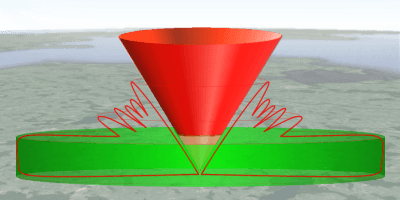
Figure 1: Radar coverage of a single radar. The cone of silence is located in the center, just above the radar antenna.
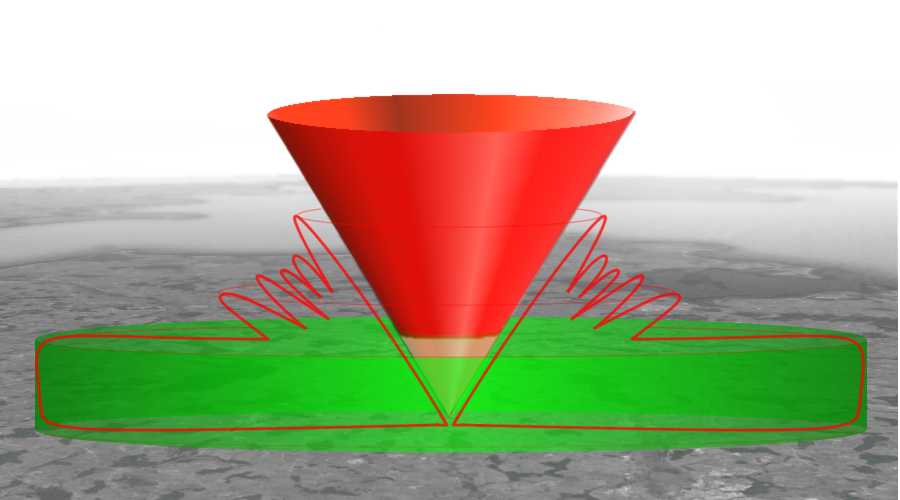
Figure 1: Radar coverage of a single radar. The cone of silence is located in the center, just above the radar antenna.

Figure 1: Radar coverage of a single radar. The cone of silence is located in the center, just above the radar antenna.
Radar Coverage
The radar coverage describes controlled by radar or radar network airspace.
In a two-dimensional radar is often used an antenna with a cosecant square pattern. Its main beam direction forms a vertical rectangle with rounded corners, which rotates about a vertical axis. Thus arises on the radar site a room with the geometry of a flat cylinder within which the radar can locate an aerial target. At an Air Surveillance Radar (ASR) (or referred to Terminal Area Radar), this cylinder (shown in green in Figure 1) has a diameter of about 120 NM (220 km) and a height of about 10,000 feet (or 3,000 m).
Cone of Silence
Radar is not designed to detect aircraft directly above the radar antenna. This gap is known as the cone of silence. This gap or cone of silence is the inverted cone mapped out by the rotating antenna as a result of the antenna back angle is less than 90 degrees. Hence, the back angle is an important antenna parameter. If the back angle is shallow then aircraft will fall outside radar cover as they over-fly the radar site. By most radars, the actual radius of the cone of silence is twice that of the height of the target. This means, a target in a height of 10,000 feet (or 3,000 m) enters the cone of silence in a range of 3¼ NM (6,000 m). Aircraft flying in radar's cone of silence may, however, be detected by another, or several other radar sites a hundred or so miles away due to their overlapping coverage.
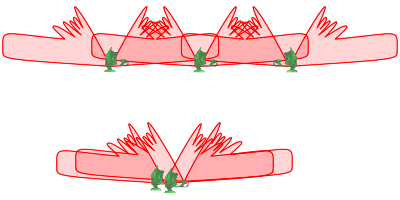
Figure 2: Vertical overlap of the radar coverage areas, above: a typical case of air defense, below a typical case of air traffic control

Figure 2: Vertical overlap of the radar coverage areas, above: a typical case of air defense, below a typical case of air traffic control

Figure 2: Vertical overlap of the radar coverage areas, above: a typical case of air defense, below a typical case of air traffic control
This term is applied accordingly in side-looking airborne radars. Here, however, the cone of silence is an area in the advance flight direction, or in the opposite direction.
Low-altitude Coverage
The flat cylinder shown in Figure 1 has a relatively smooth lower surface in flat terrain. A curvature of the outer edges upwards is in the order of half a degree. The low-altitude coverage is limited by the shadow formed by the earth's curvature. Uneven terrain such as hills or even mountains and valleys by shading also have an impact on the size of the dead zone. Also, this dead zone can be covered by another radar. Despite a large number of organized in radar network radar, space will always remain in extremely low altitude at which an aircraft can fly below the radar. In practice, however, this is for the pilot not as easy as it must know exactly where to fly for to remain as far away from each radar. In order to keep this lower limit as low as possible but a very dense network of radars must already be deployed. As you can imagine, countries in mountainous regions (e.g. Switzerland and Austria) have problems to establish a complete area with full radar coverage. For the requirements of national defense, a number of smaller mobile radar sets (as so-called Gap-filler) are established exactly in such gaps when needed.
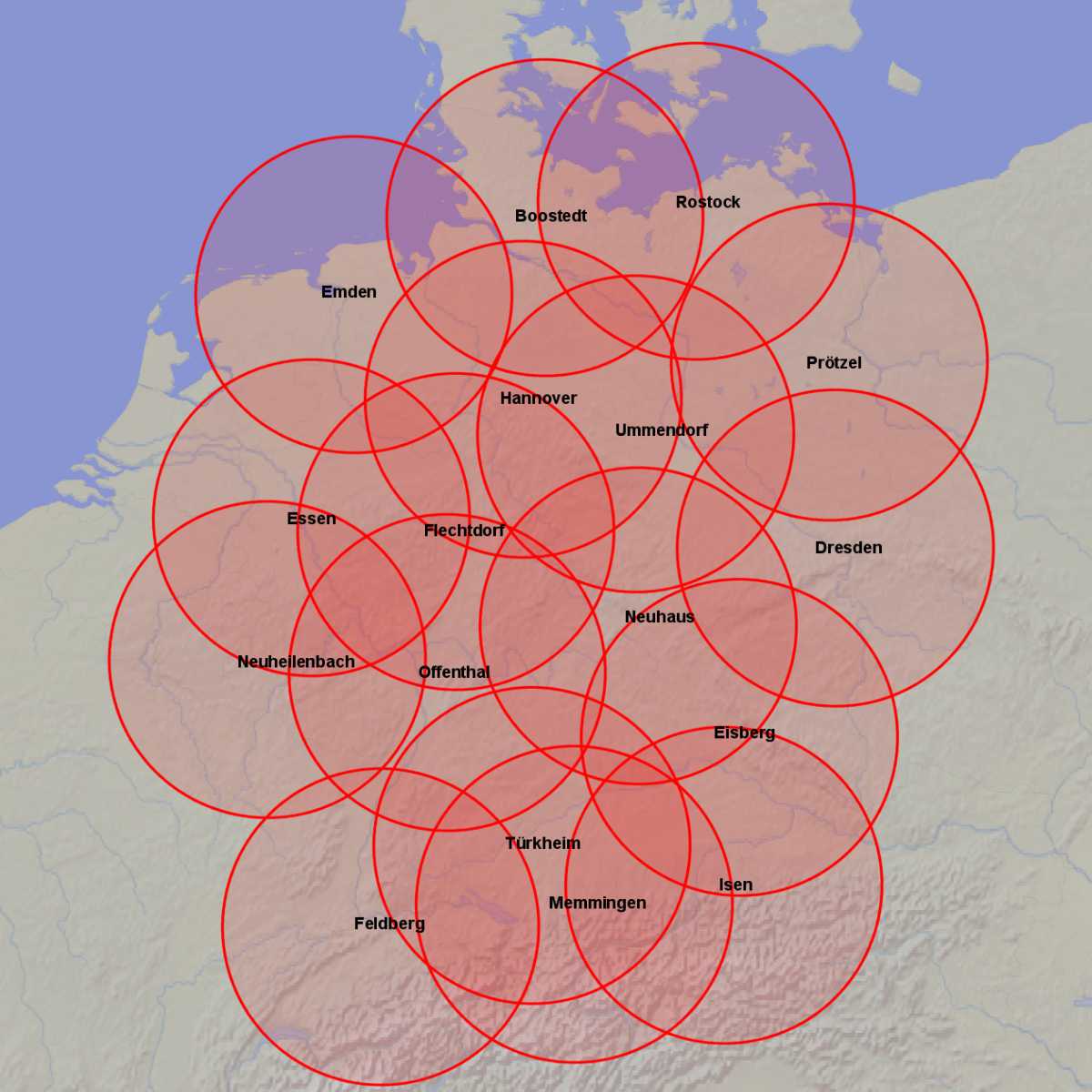
Figure 3: horizontal radar coverage of a network of weather radars in Germany
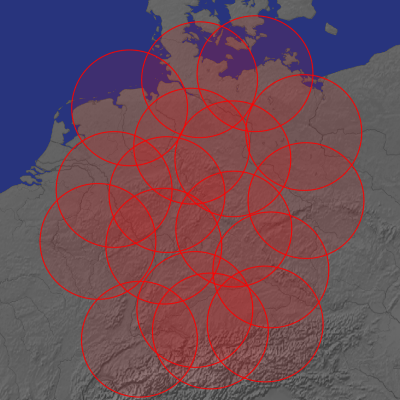
Figure 3: horizontal radar coverage of a network of weather radars in Germany (Source: Deutscher Wetterdienst)
Depending on the task, such overlap is done according to different principles. For the air surveillance on behalf of the national defense, a complete radar coverage must be organized down to a height, for example, of 100 m. In crisis or defense case that needs to be lowered even further. However, overlap with the cones of silence is not necessary.
In air traffic control, the cone of silence has much higher importance. In contrast, flight movements in a flight level lower than 300 feet (100 m) are completely irrelevant far away from any airport, e.g. from a distance of 30 NM (55 km). For very large airfields, such as the Munich airport for reasons of redundancy two Terminal Area Radars are used. One ASR is located north, and one ASR is located south of the airfield at a mutual distance of just 8 km away. So they cover their cone of silence each other.
The Deutscher Wetterdienst (German Weather Service) can cover Germany with 17 radars, each with a range of 150 km as shown in Figure 3. The radars used (for example type Meteor 1500C) are able to pivot their parabolic antennas also vertically upwards. Therefore they don't have a cone of silence compared to a 2D radar. A radar low-altitude coverage of fewer than 200 m is also not really matter for weather radar.
